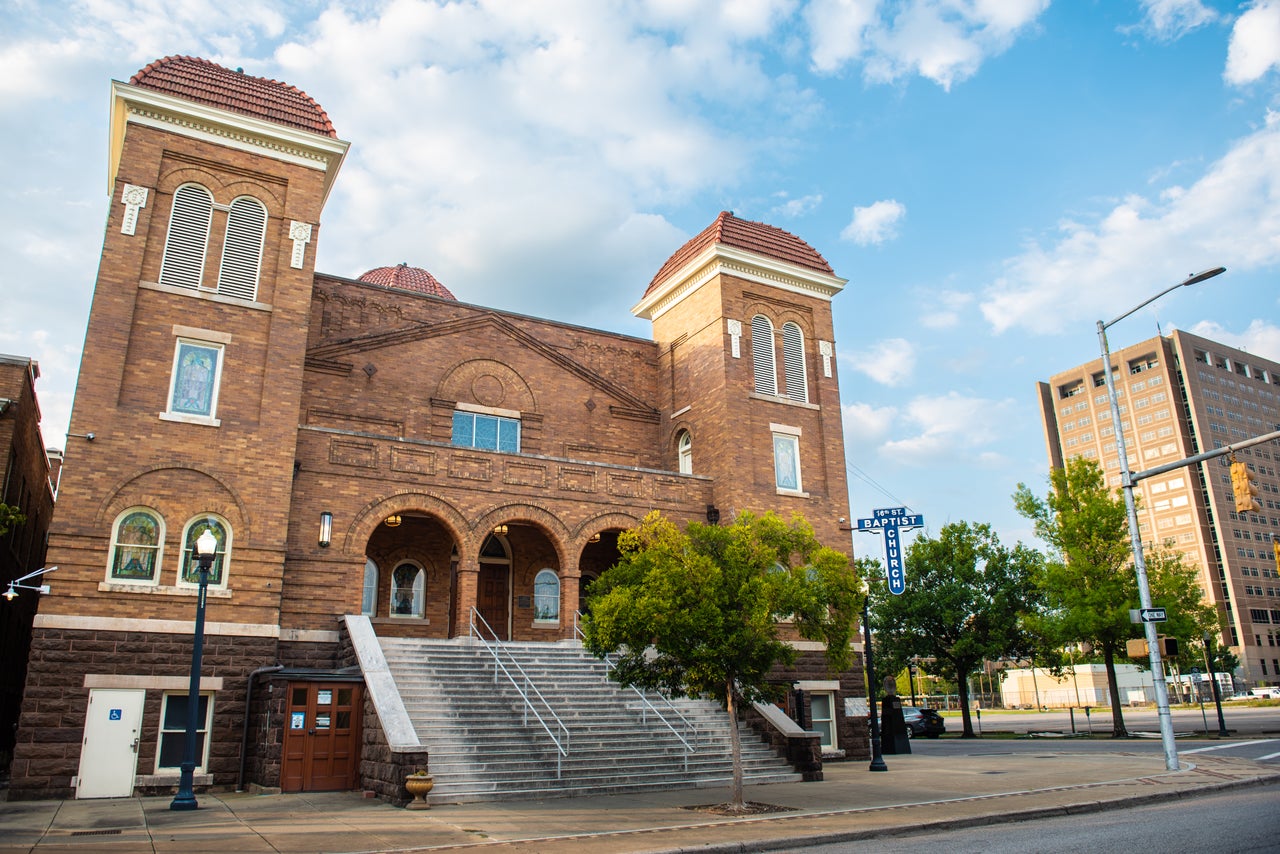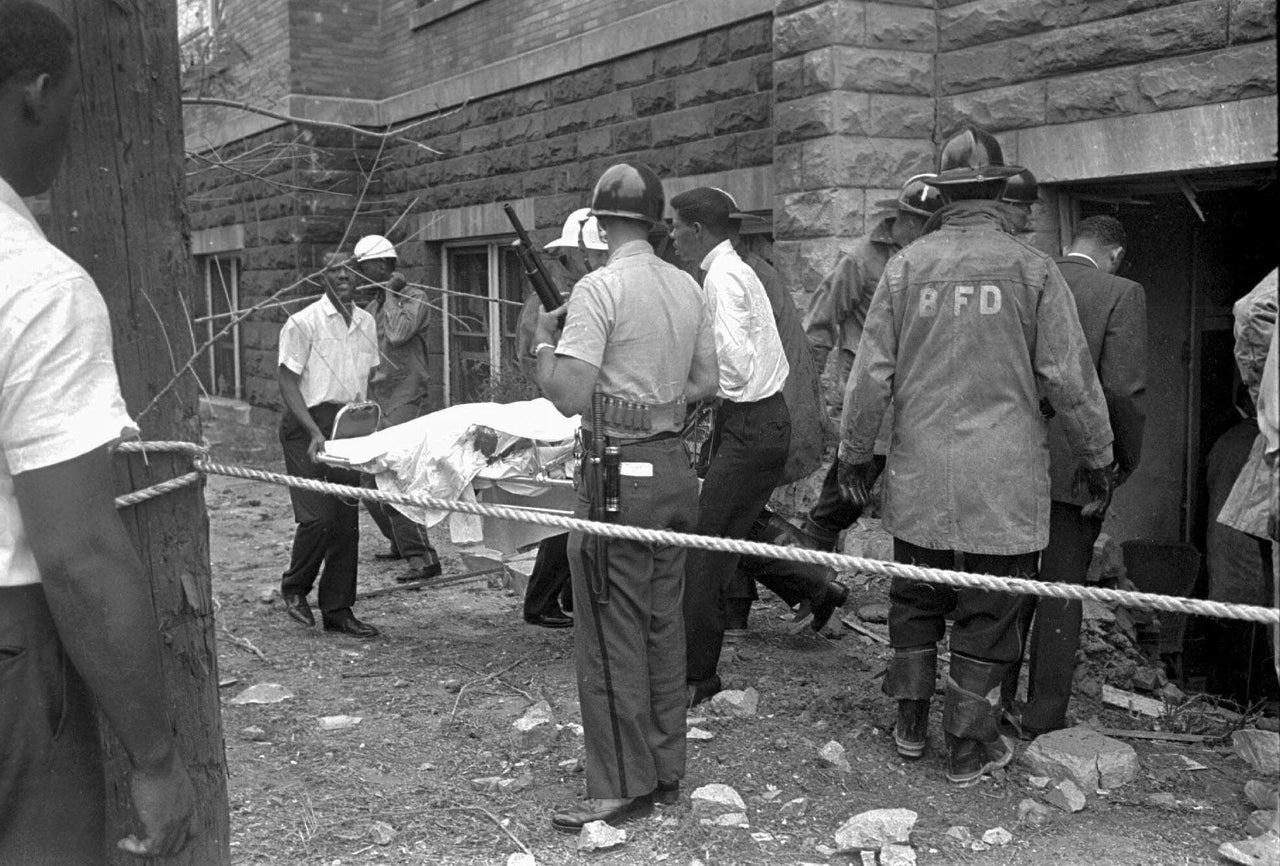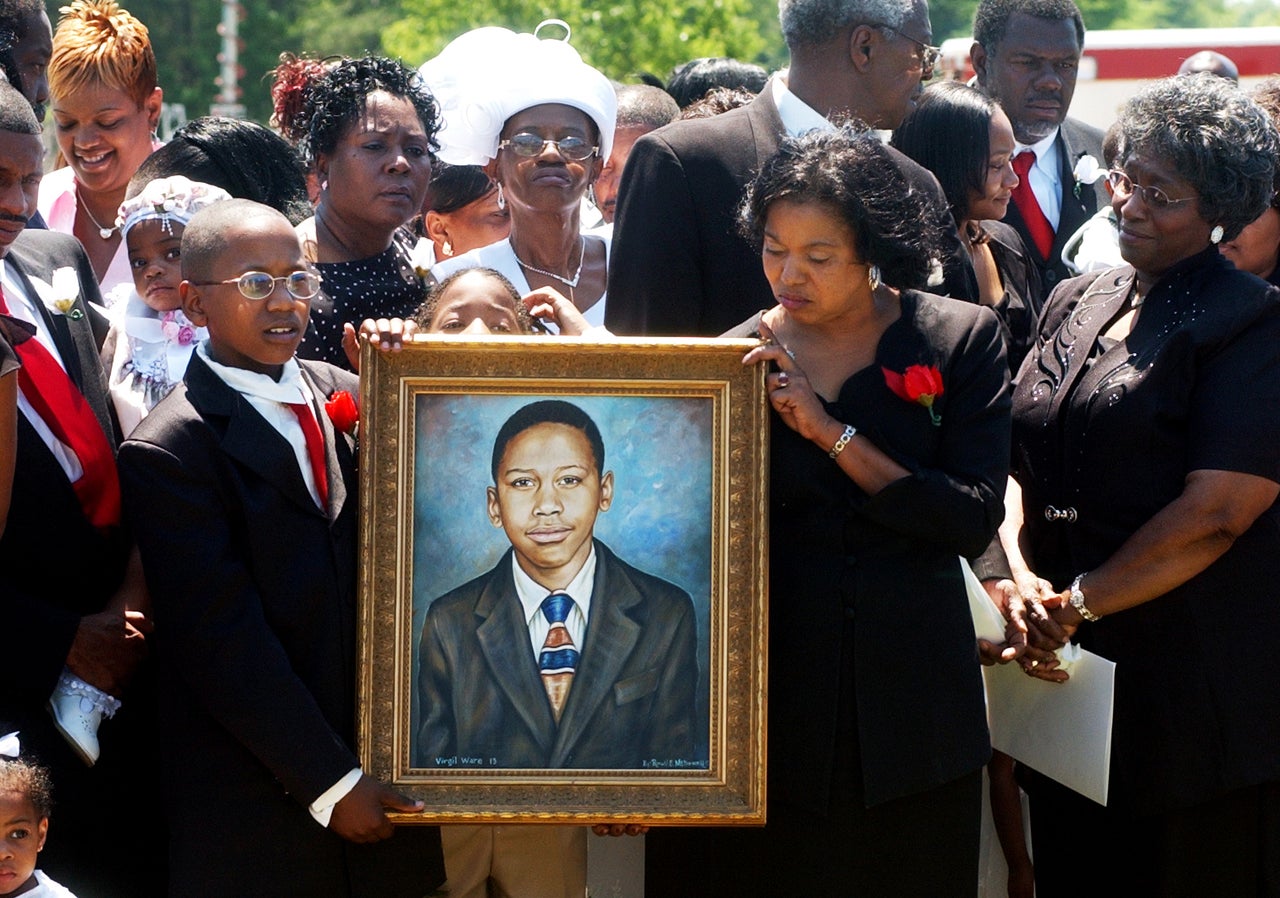White Supremacists Bombed A Black Church 60 Years Ago. Survivors Don’t Want History Erased.
Lisa McNair drove from her home in Birmingham to Alabama’s state legislature in Montgomery last year for a forum about “divisive concepts” legislation being pushed by state Republicans. The GOP bill would have severely limited how educators could teach about race and racism.
McNair believed the bill would force students to learn an inaccurate account of American history — and about the tragic incident that had devastated her own family.
When it was McNair’s turn to speak, she stood at the microphone with a picture of her sister.
“I, too, want to oppose that bill because I feel that that bill will inhibit the teaching of the life of my sister, Denise McNair,” she said. “Her story is not CRT or whatever that is, because I really don’t know, and I really don’t care. But it’s true history.” (CRT refers to critical race theory, a college-level academic theory about systemic racism. In recent years, Republicans have used the term to refer to any education about race, and have increasingly sought to remove such lessons from classrooms around the country.)
Sixty years ago, on Sept. 15, 1963, McNair’s sister, Carol Denise McNair, was one of four Black girls killed in a bombing at the 16th Street Baptist Church in Birmingham. The bombing of the predominantly Black church outraged the country and helped fuel the Civil Rights Movement.

McNair told HuffPost she saw state Sen. Jabo Waggoner, one of the 12 Republican co-sponsors of the bill, tear up after hearing her testimony. She gave him a T-shirt with Denise’s face on it after the forum.
The legislation would have prohibited students and employees of Alabama schools, state agencies and universities from learning any “divisive” concepts, including that “fault, blame, or bias should be assigned to a race, color, religion, sex, ethnicity, or national origin,” or that a student or employee should “assent to a sense of guilt, complicity, or a need to apologize,” due to their race or national origin.
The bill never made it to the state Senate for a final vote.
Republican lawmakers made a second attempt to pass the bill in June, but they weren’t successful. Despite meeting McNair, Waggoner still supported the legislation and sponsored it a second time. His office did not respond to HuffPost’s request for comment.
Alabama Republicans are discussing reintroducing the legislation again, Republican sponsor and state Rep. Ed Oliver said this summer. (Oliver’s office did not respond to HuffPost’s request for comment on the legislation.)
“I do believe me being there that day helped them to think differently about voting for that bill,” McNair told HuffPost. “You have to come in and talk to people where they live. You have to put a human face on it, and that is why you have to be in front of our legislators and state senators — because they work for us.”
McNair is happy Alabama hasn’t yet adopted a “divisive concepts” law, but for her and other survivors, it was a brutal reminder of how far the U.S. still has to go.
“It is hard to believe that 60 years later, we still are having such major racial issues,” said McNair, who was born a year after her older sister was murdered. “We never will forget what happened to Denise and the other girls. It was a turning point in our lives. My parents, that was their only child. They did not have any other children at the time. It never left them. They grieved for her till the day she died.”
Three Minutes
Carol Denise McNair, Addie Mae Collins, Cynthia Wesley and Carole Robinson all died after four members of the Ku Klux Klan set off a bomb at the 16th Street Baptist Church at 10:24 a.m. that September day. McNair was 11 years old; the other three girls were 14.
Thomas Edward Blanton, Bobby Frank Cherry, Robert Chambliss — and, it is suspected, Herman Cash — planted at least 15 stacks of dynamite with a timer under the steps of the church. An anonymous man called the church, and a teenage Sunday school secretary answered.
“Three minutes,” the caller said, then hung up.
One minute later, the church exploded. At least 22 people were injured during the bombing, including Collins’ 12-year-old sister, who had pieces of glass implanted in her face and was blinded in one eye.

At the time, Birmingham was one of the most racially segregated cities in the county. It even became known as “Bombingham” because so many Black residents’ homes were bombed by white supremacists.
By the start of the 1960s, the Civil Rights Movement was underway, with Martin Luther King Jr. largely leading the charge in the South. He worked closely with Fred Shuttlesworth, a minister in Birmingham, to establish the Southern Christian Leadership Conference (SCLC) and the Birmingham Campaign, an effort to bring national attention to the mistreatment of Black people in the city.
Following the Montgomery bus boycott, where King and other members protested segregated public transportation, King wrote his now-famous letter from Birmingham jail in 1963 — just five months before the church was bombed.
On May 2, 1963, thousands of children left school and gathered at the church to march in downtown Birmingham against racial injustice. The protest became known as the Children’s Crusade. They were met violently with water hoses, police dogs, beatings and arrests.
Many of the tactics were provoked and influenced by the racism of Theophilus Eugene “Bull” Connor, who served as Birmingham’s commissioner of public safety. Despite the police brutality, the children proceeded with their demonstration. It prompted the Department of Justice to intervene and influenced then-President John F. Kennedy to express his support for civil rights legislation.

Activists also blamed then-Gov. George Wallace, a loud segregationist, for inspiring the racist acts. The same year as the church bombing, Wallace proclaimed in his inaugural address, “Segregation now, segregation tomorrow, segregation forever.” He also hired Asa Carter, the founder of a local Ku Klux Klan chapter, as his speechwriter during a campaign in which he often blamed integration as the reason for an increase in crime.
Two of the men behind the bombing, Blanton and Cherry, were not sentenced to prison until nearly 40 years later. Chambliss wasn’t tried and convicted for the death of McNair’s sister until 1977. And Cash died in 1994, having never been indicted on any charges.
McNair believes that if the “divisive concepts” bill had been enacted, it would have not allowed the tragedy of the bombing to be told in detail.
“[The bombing] is the story of our shared American history, and it needs to be told,” McNair said. “Little white children, and all children, need to know, because this is what happened.”
No Regard For Humanity
A white supremacist rally was supposed to take place in Birmingham on Sept. 15, and white teenagers Larry Joe Sims and Michael Lee Farley were among those who planned to attend. But the rally was canceled due to the bombing.
So the two boys bought a Confederate battle flag and attached it to a scooter as they went into a predominantly Black neighborhood. They carried a .22-caliber pistol they had purchased three days earlier. They saw a young boy, Virgil Ware, and his brother riding a bicycle. Farley told Sims to shoot the gun and scare them.
Sims ended up shooting Ware in the chest and face, killing him. An all-white jury convicted Farley and Sims of second-degree manslaughter and sentenced them to seven months of jail, but the cases were suspended by a judge and changed to two years of probation.

Dale H. Long, a lifelong Birmingham resident who also survived the bombing, remembers the bombing and Ware’s killing the very same day, as well as the police killing of another Black boy, Johnny Robinson.
“That is what critical race theory is about. They don’t want people to know, they don’t want their kids to know [about other tragedies],” Long told HuffPost. Sims used Ware “as target practice,” he said.
Long’s parents used to tell him not to go outside for any reason, especially when demonstrations were happening in the city. Black kids weren’t allowed to attend pools with white people, let alone use the same bathrooms or drink from the same water fountains.
“We did not have the luxury of traveling a lot and enjoying the amenities of the local museum. A lot of the activities took place at church,” Long told HuffPost.
Long, who attended Sunday school and played in the orchestra with Denise McNair, lived two blocks from Shuttlesworth and remembers the minister’s home being bombed. “We knew it, because it shook ours,” Long recalled.
Moving Forward
McNair says there is a “sadness” that 60 years later, America is still having major issues with race. While she wishes the country would take more steps forward, she remains optimistic.
“I just wish that we weren’t in this place and that we should be further along. That is part of what I think. I hope that we will try to do better. I like to think so many more of us don’t want racism and will stand up against it,” McNair told HuffPost.

“But I still see people voting for politicians who espouse racist ideals, and it is hard to believe so many people would vote for a politician who espouses these ideas and not see them for who they are.”
Last year, she spoke to civic leaders in Pensacola, Florida, about her family’s experience. But one local school canceled her separate speaking engagement and another cut her speaking time short to avoid discussions related to critical race theory, according to McNair, which Florida Gov. Ron DeSantis has aggressively railed against.
Long also said he’s worried by DeSantis’ actions, particularly after the governor and presidential candidate said recently that Black people benefited from slavery.
“They are taking away our history. They find something wrong with teaching Black history,” he said. “You can talk about the Revolutionary War or Boston Tea Party, but they don’t want to talk about slavery because it makes them look bad.”
var _fbPartnerID = null; if (_fbPartnerID !== null) { fbq('init', _fbPartnerID + ''); fbq('track', "PageView"); }
For all the latest Education News Click Here
For the latest news and updates, follow us on Google News.

